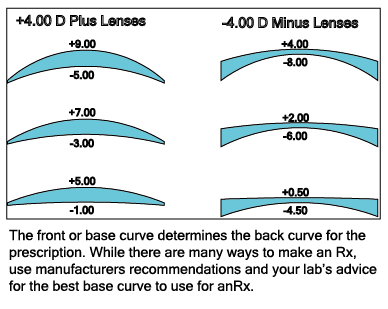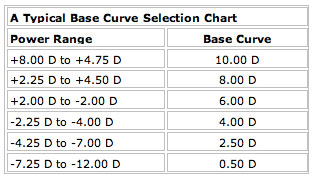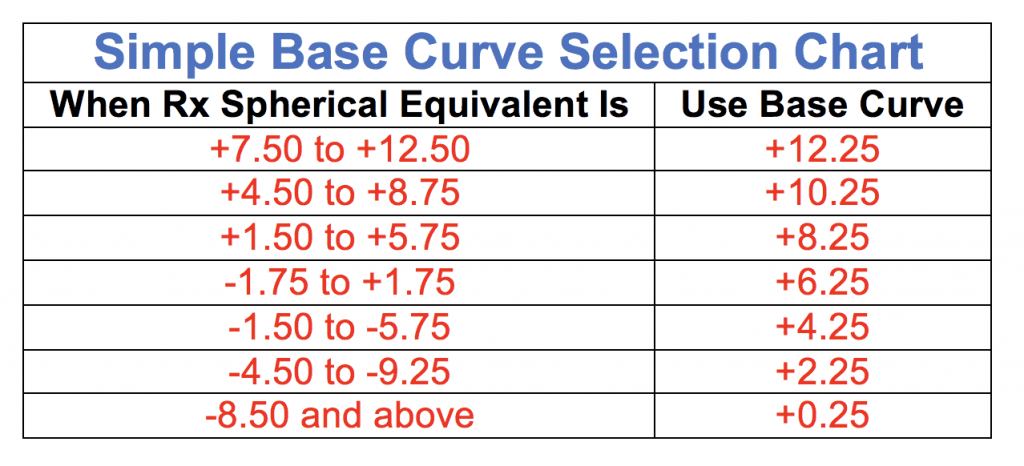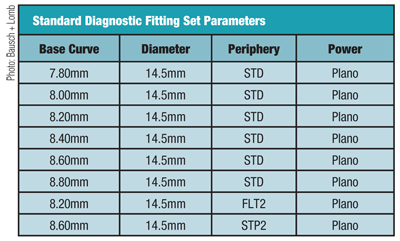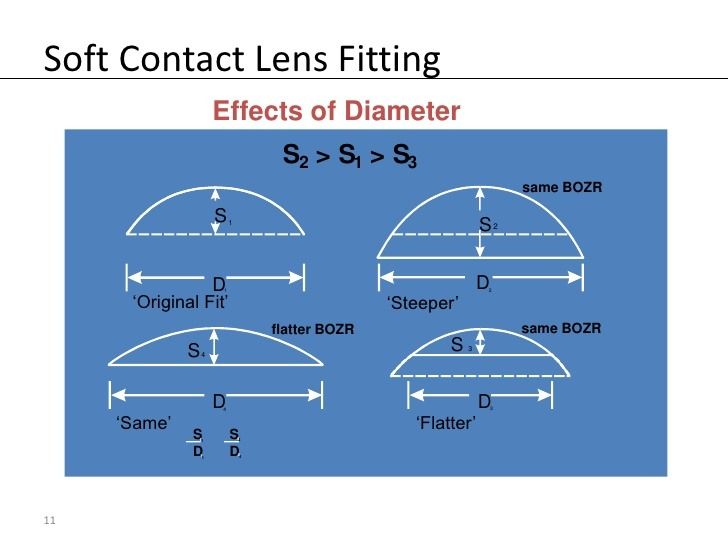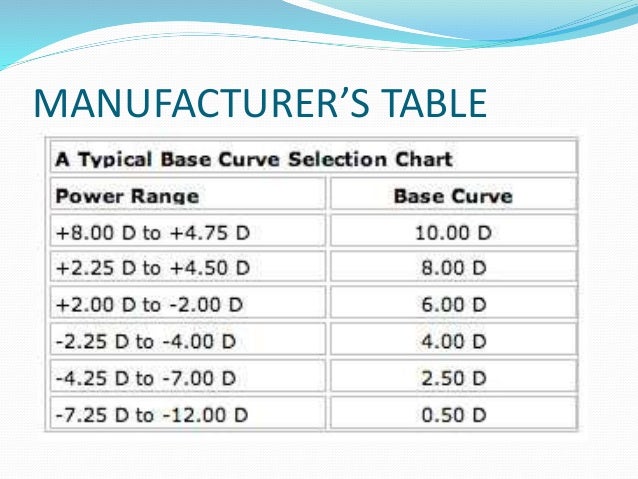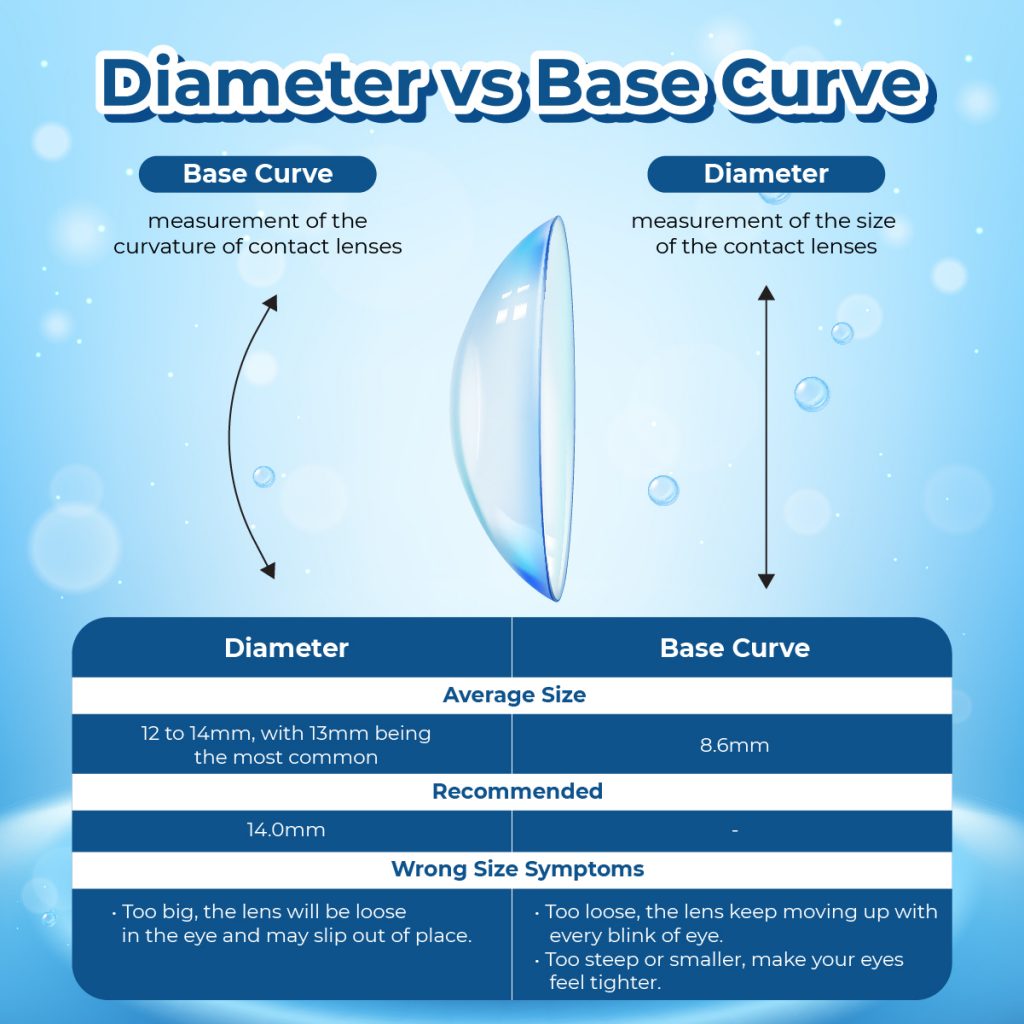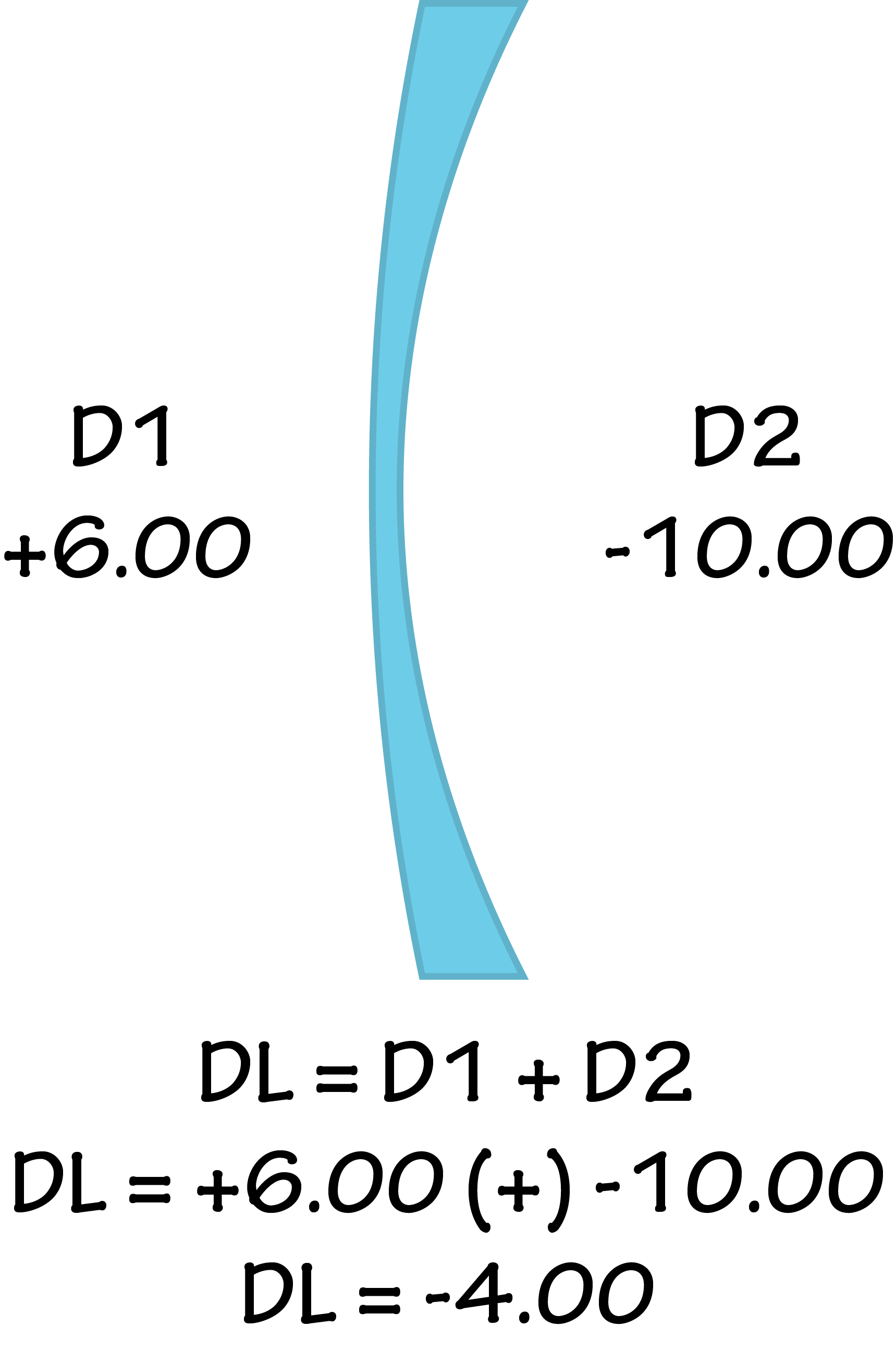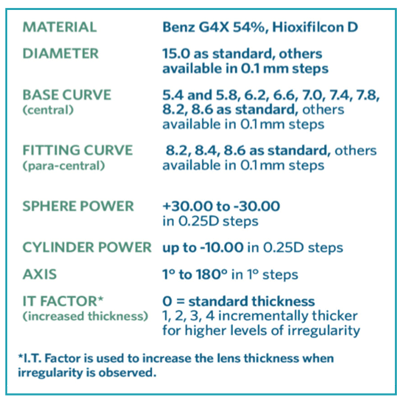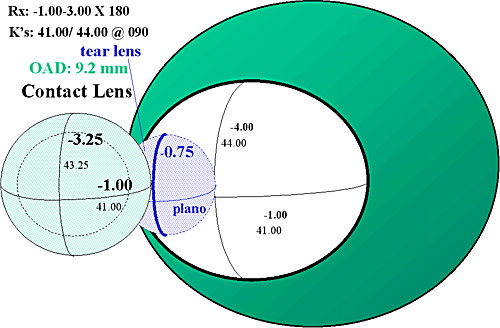Contact Lens Base Curve Chart
A long radius of curvature will produce a flatter base curve.
Contact lens base curve chart. Typical base curve values range between 80 and 100 mm. If it blurs at 15 90 success is achieved with two lenses. 87 145 600 to -600 in 025 steps-650 to -1000 in 050 steps-075 -125-175 -225 10 to 180 in 10 degrees Light Blue VISITINT.
Determine the base curve of your lenses. Base Curve Rx spherical equivalent 600D For a minus prescription. The form of a given lens is determined by base curve selection The base curve of a lens is the surface curve that serves as the basis or starting point from which the remaining curves will be calculated.
Back Toric Lens Design. Ociation Between Multifocal Soft Contact Lens Decentration And Visu Opto. Enter your keratometry in the second box.
91 rows Contact Lens Base Curves and Diameters. Until the acuity chart first blurs. Hence this lens has an overall power of 300 500 -200.
At 10 70 will be. When a lens clock is held up against a concave surface the red numbers indicate the curvature of that surface. Stacy Cbell Ncle Ac Coa Eye Care Ociates.
Our certified fitting consultants. 3 rows Vertex and Diopters-to-Base-Curve Conversion Charts. Soft Special Edition Base Curve.
This is the inside curve measurement of your lenses. 450 -100 X 89 The spherical equivalent of that Rx is 400 450 12 of -100 400 600 1000. 4300 4500 090.
Contact Lens Clinical Pearls Pocket. Base Curve 12 the Rx spherical equivalent 600D. Diopters to Radius Conversion Chart.
Searching for contact lenses with a base curve of. Any questions or comments please feel free to drop us a line. If the twisting is 20 in each direction 90 of the patients will be successful.
Some brands offer only one base curve size which is more common among brands of soft contact lenses. 4300 180 4500 090. Achieved with a base curve radius BCR equal to the flatter K reading.
We are here to help you deliver the most successful contact lens option to all of your patients. The surfacing laboratory is ultimately. The lower the number the flatter the base curve and conversely the higher the number the steeper the base curve.
Find the base curve the curve of the. Choose the correct base curve for the following Rx. Many soft contact lens brands only offer a.
For hard contact lenses this measurement is essential. Base curves can range from plano zero surface power up to plus 16 diopters and even some minus values. Vertex Conversion Charts For Sphere And Cylinder Binations Contacts Advice.
Typical base curve values range between 80 and 100 mm though it can be flatter from 70mm if you have a rigid gas-permeable lens. For a plus prescription. AIR OPTIX for Astigmatism Contact Lenses Base Curves.
Below youll see the base curve and diameter of each lens as well as the power range available. Enter the power of your contact lens in the first box. If you have a negative number the closer the lens is to the eye the stronger the lens is.
This can be done in plus or minus cyl. Soft Lenses For Irregular Corneas Yes We Can. The baseline is that a person with a higher base curve number has a flatter cornea compared to someone with a lower base curve number which indicates a steeper cornea.
Now that most contact lenses dispensed are soft lenses this measurement doesnt need to be quite as precise. For semi-finished lens blanks the base curve will be the factory-finished curve which is generally located on the front of the blank. The base curve number would be a number between 80 and 100 millimeters and would be more precise because these lenses need to fit just right.
Search by material to find technical specifications base curve selection charts and barcodes for all current semi-finished lenses offered by Signet Armorlite. Contact Lenses - Base Curve Diameter. In the example above the base curve is 500 and the back curve is -200.
Choose the desired lens type in the third box. In some cases it can be as flat as 70mm especially if you have a rigid gas-permeable lens. A lens clock measuring -200 back curvature.
As the blank size increases the radius of curvature increases. A person with a higher base curve number has a flatter cornea the clear front surface of the eye compared to someone with a lower base curve number which indicates a steeper cornea.
